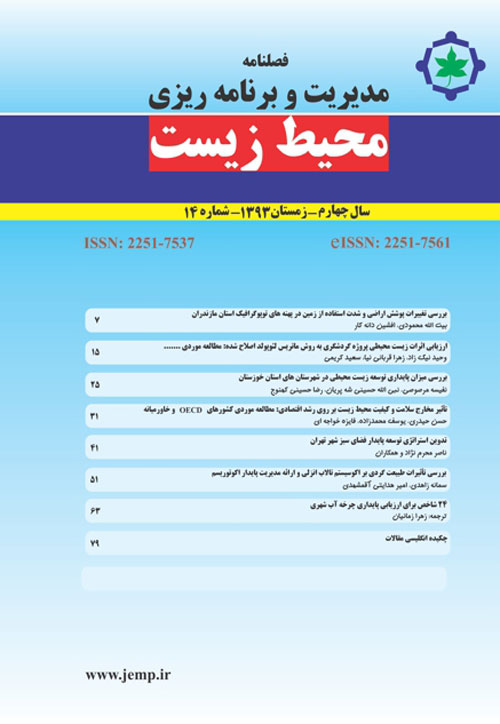Performance Evaluation of Artificial Neural Networks for Predicting Water Quality Indices (TDS) in Sari Tajan River
Author(s):
Abstract:
One of the important factors for development in each region is the availability of appropriate water resources. In addition to water quantity quality is also of great importance. Water quality is a term used to describe the chemical، physical and biological characteristics of water with respect to its suitability for a particular use. One of the new methods in environment problems is using Artificial Neural Network (ANN). Main objective of this study is to evaluate capability of Artificial Neural Network MLP and RBF and Multivariate Linear Regression (MLR) models in order to predict qualitative indices (TDS) in Trajan river of Sari، located in Mazandaran Province. In this study، the information and data from Tajan River including 9 monthly parameters of water quality for a period of 40 years (1966-2005)، used to predict qualitative indices (TDS). Efficiency of the models was evaluated by some statistical criteria including determination coefficient (R)، root mean square error (RMSE) and Nash-Sutcliffe efficiency (NS). The results of MLR showed that qualitative indices (TDS) can be predicted based with correlation coefficient and determination coefficient of 0. 762 and 0. 872، respectively. The results indicated the ANN model could provide better prediction in comparison with MLR model. Also، comparison of these two neural network results specified that MLP neural networks had a relatively more accuracy and the only advantage of RBF neural networks was their much less time of training.
Keywords:
Language:
Persian
Published:
Journal of Environmental Management And Planing, No. 8, 1392
Page:
27
https://www.magiran.com/p1214626


